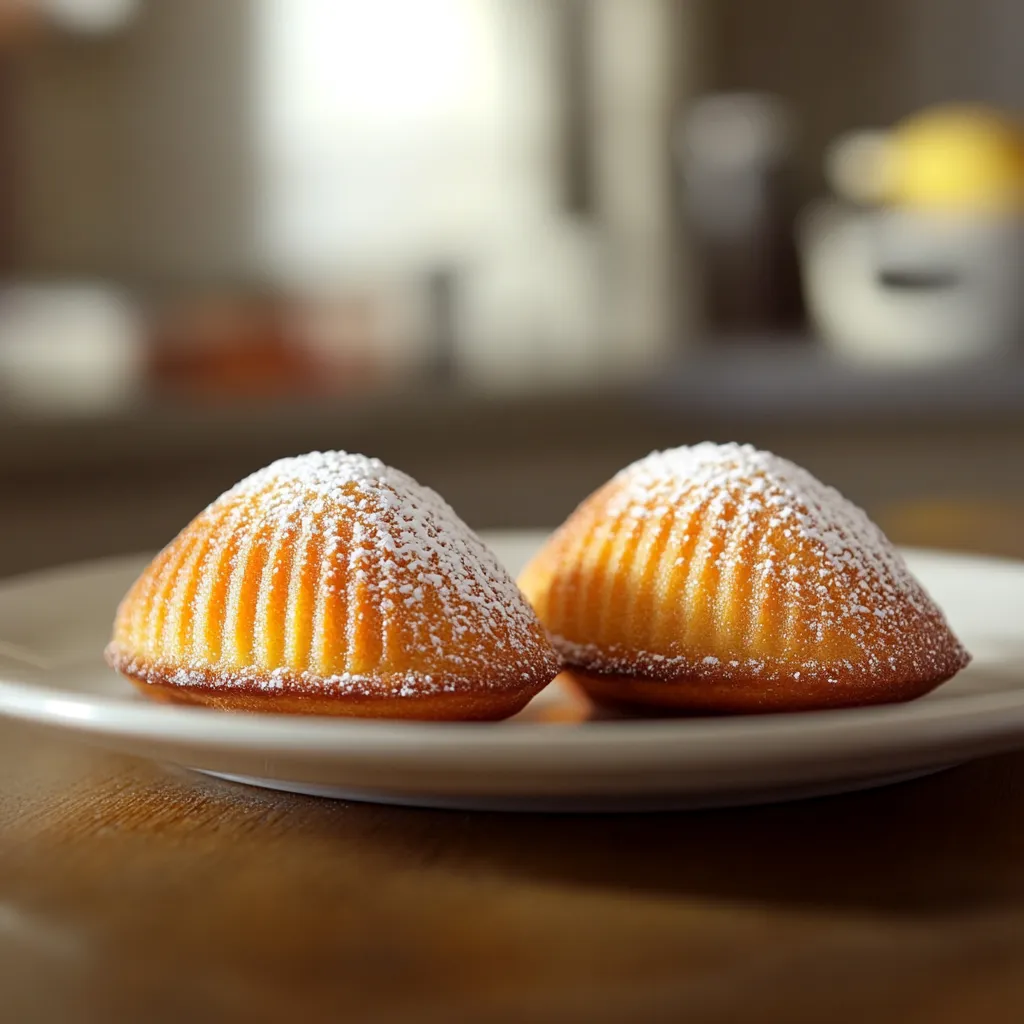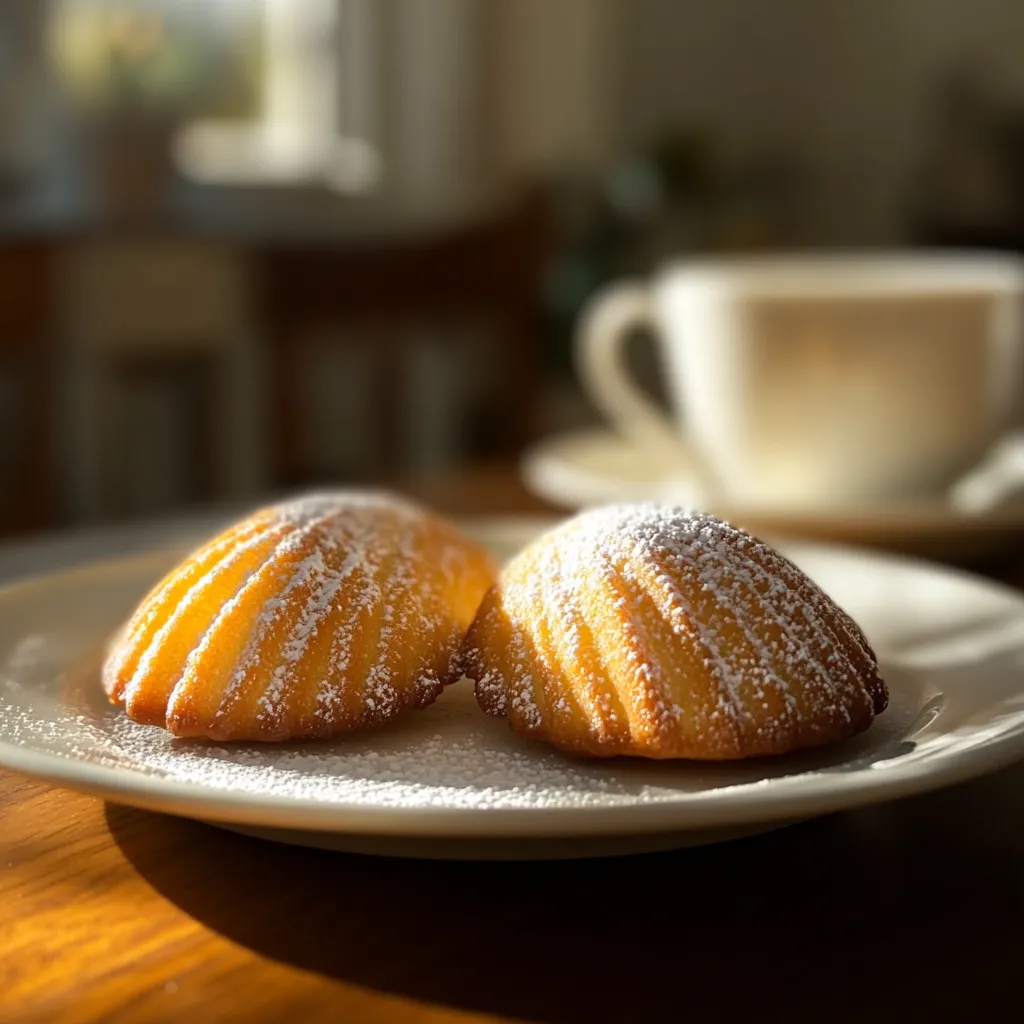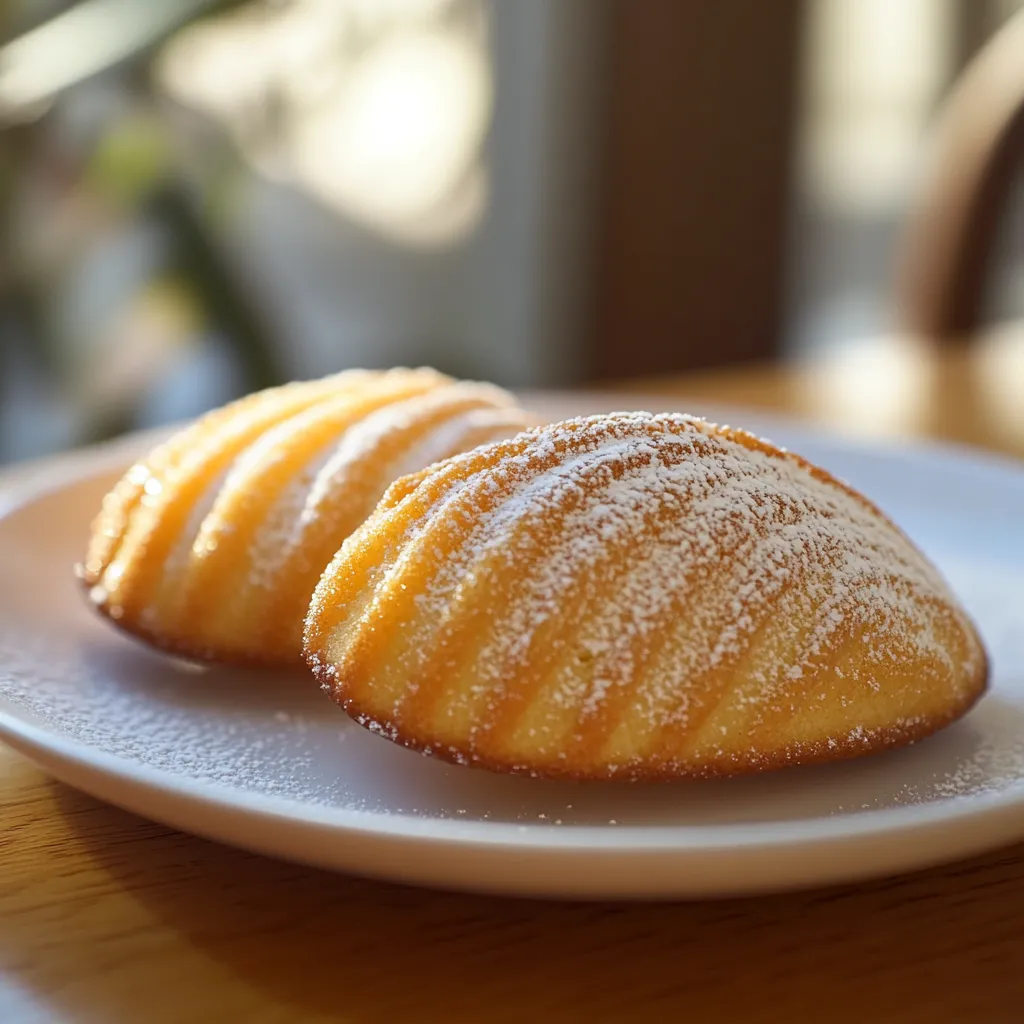A Memory of Madeleines
I still remember the first time I made madeleines with my grandmother, Julia. The kitchen was filled with the sweet aroma of butter and vanilla, and the sight of the little golden cakes with their perfect hump was mesmerizing. But I also recall the frustration of biting into one, only to find it too dry. That moment sparked a journey of trial and error to discover the secrets behind moist, melt-in-your-mouth madeleines.
So, why are madeleines so dry? Let’s explore the reasons behind this common problem and how to fix it.

Table of content:
Understanding the Texture of Madeleines
Madeleines are a type of French sponge cake—light, buttery, and slightly crisp on the edges. Their iconic shell shape and delicate crumb make them an elegant treat. However, their texture can easily go wrong if the baking process isn’t followed carefully.
A perfect madeleine should be:
- Light and fluffy on the inside
- Slightly crisp on the edges
- Moist with a tender crumb
If your madeleines turn out dry, it’s likely due to one (or a combination) of the following factors.
Common Causes of Dry Madeleines
Understanding why madeleines dry out is the first step to perfecting them. Here are the most common culprits:
1. Overmixing the Batter
- Mixing the batter too much develops gluten, leading to a tough and dry texture.
- Instead of vigorously whisking, gently fold in the flour to keep the batter light.
2. Overbaking
- Baking at too high a temperature or for too long can evaporate moisture, making the cakes dry.
- Stick to the recommended baking time (typically 8-10 minutes at 375°F).
Tip: Oven temperature plays a crucial role. Many home ovens run hotter than their settings indicate. For precise baking, consider using an oven thermometer (importance of oven temperatures).
3. Insufficient Butter
- Butter is crucial for moisture retention and richness. If you reduce the amount, your madeleines may become dry.
- Always use high-quality butter and melt it properly before incorporating it into the batter.
Fact: Butter in baking isn’t just about flavor—it helps create a soft texture. Read more about butter’s role in baking (butter’s role in baking).
4. Not Resting the Batter
- Many bakers skip this step, but chilling the batter for at least an hour (or even overnight) helps hydrate the flour, leading to moist and tender madeleines.
5. Poor Storage
- Madeleines dry out quickly due to their small size and light texture.
- Store them in an airtight container and consume them within a day for the best taste.
How to Achieve Perfectly Moist Madeleines
1. Mix with Care
- Use a gentle folding technique when incorporating the flour to prevent gluten development.
- Do not overbeat the eggs and sugar—this can introduce too much air into the batter.
2. Bake Smartly
- Use an accurate oven temperature (375°F).
- Do a toothpick test—it should come out with a few moist crumbs but not wet batter.
3. Boost Moisture with Butter
- Opt for European-style butter for its higher fat content.
- Don’t skimp on the butter quantity—it adds flavor and moisture.
4. Let the Batter Rest
- Refrigerate the batter for at least 1 hour (or overnight).
- This helps develop the signature hump and ensures a moist texture.
5. Store Correctly
- Keep madeleines in an airtight container at room temperature for up to 2 days.
- If storing longer, freeze them—then reheat slightly before serving.
For more storage tips, check out this guide on achieving perfect cake texture.

Advanced Tips for Ultimate Madeleines
Use the Right Pan
- A nonstick metal madeleine pan ensures even baking.
- Always grease and flour the pan to prevent sticking.
Experiment with Ingredients
- Adding a little honey or almond flour can improve moisture retention.
- Brown butter instead of melted butter enhances the flavor and texture.
Oven Temperature Tricks
- Start baking at 425°F for 2 minutes, then lower to 375°F.
- This method encourages a better rise while keeping the inside soft.
Learn more about proper baking methods in The Science Behind Cake Mixing Methods.
FAQs About Madeleines
Why didn’t my madeleines form a hump?
- The hump is caused by a temperature shock. Make sure the batter is cold before baking in a preheated hot oven.
Can I store madeleines for later?
- Yes, but they are best eaten fresh. Store in an airtight container for up to 2 days or freeze for up to a month.
Why do my madeleines stick to the pan?
- Insufficient greasing is the main issue. Use a nonstick spray or coat with melted butter and flour before pouring in the batter.
Recipe: Perfectly Moist Madeleines
Ingredients:
- 2 large eggs
- ½ cup (100g) granulated sugar
- 1 tsp vanilla extract
- 1 tsp lemon zest (optional, but adds a lovely citrusy note!)
- 1 cup (120g) all-purpose flour
- 1 tsp baking powder
- ¼ tsp salt
- ½ cup (113g) unsalted butter, melted and cooled
- 2 tbsp milk
- Powdered sugar (for dusting)
Recipe Steps
Step 1: Prepare the Batter Like a Pro
- In a large mixing bowl, whisk together the eggs and sugar until the mixture turns pale and slightly thick. This should take about 3-4 minutes—yes, patience pays off!
- Stir in the vanilla extract and lemon zest (if using). The zest adds a fresh, slightly tangy twist that enhances the buttery flavor.
- In a separate bowl, sift together the flour, baking powder, and salt. This ensures your madeleines stay light and airy.
- Gently fold the dry ingredients into the egg mixture using a spatula. Be careful here—overmixing leads to tough madeleines. Think gentle swirls, not aggressive stirring!
Step 2: The Secret to Moist Madeleines? Butter & Resting
- Slowly drizzle in the melted butter while folding. You want it fully incorporated but without knocking out the air.
- Add the milk and give it one final gentle stir. The batter should be smooth, but not runny.
- Cover the bowl with plastic wrap and refrigerate for at least 1 hour (or overnight). Trust me, this step is non-negotiable if you want that signature madeleine hump and a soft, moist texture.
Step 3: Bake to Golden Perfection
- Preheat your oven to 375°F (190°C). Grease and lightly flour your madeleine pan—you don’t want those little beauties sticking!
- Spoon or pipe the batter into each mold, filling them about ¾ full. Avoid spreading it out—the oven’s heat will do the job for you.
- Bake for 8-10 minutes, or until the edges are golden and the centers have a slight dome. (Yes, the famous madeleine hump!)
- Remove from the oven and let them cool in the pan for 2 minutes before gently transferring to a wire rack.
Step 4: The Final Touch (A.K.A. Making Them Irresistible)
- Once cooled, dust lightly with powdered sugar for that classic French bakery look.
- Serve immediately with a cup of tea, coffee, or even hot chocolate (because why not?).
Cooking Tips for Madeleine Success





Now go bake some moist, buttery madeleines and enjoy them like a true French pastry chef!

Final Thoughts
Mastering the art of moist madeleines requires precision and care. From using the right ingredients to perfecting your baking technique, small tweaks can make a big difference. With these tips, you’ll never have to suffer through a dry madeleine again.
Now it’s your turn—go bake some perfect, buttery madeleines!






 Hi there! I’m Chef Maxime, your friendly kitchen companion and recipe guide.
Hi there! I’m Chef Maxime, your friendly kitchen companion and recipe guide. the secret to a healthier life, is on your plate
the secret to a healthier life, is on your plate 